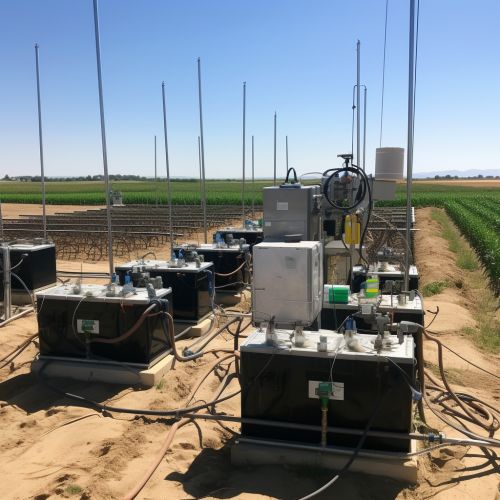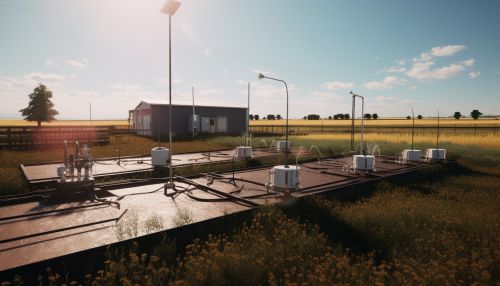Biosparging
Introduction
Biosparging is an in-situ remediation technology that involves the injection of air directly into groundwater to stimulate the biodegradation of organic contaminants. This technique is commonly used for the remediation of petroleum hydrocarbon contaminants and can be applied to a wide range of soil types and hydrogeological conditions.


Principle of Operation
The principle of operation of biosparging is based on the enhancement of aerobic biodegradation processes. The injection of air into the subsurface increases the concentration of dissolved oxygen in the groundwater, which stimulates the growth of aerobic bacteria. These bacteria are capable of degrading organic contaminants, such as petroleum hydrocarbons, through metabolic processes. The by-products of this biodegradation process are typically harmless substances like carbon dioxide and water.
Components of a Biosparging System
A typical biosparging system consists of several key components, including an air compressor, air injection wells, and monitoring wells. The air compressor is used to inject air into the subsurface through the air injection wells. The monitoring wells are used to monitor the progress of the remediation process and to ensure that the injected air is being distributed evenly throughout the contaminated area.
Design Considerations
The design of a biosparging system requires careful consideration of several factors, including the nature and extent of the contamination, the hydrogeological conditions of the site, and the characteristics of the indigenous microbial population. The air injection rate and the spacing of the air injection wells are also important design parameters that can significantly affect the efficiency of the remediation process.
Applications
Biosparging has been successfully applied for the remediation of a wide range of organic contaminants, including petroleum hydrocarbons, chlorinated solvents, and certain types of pesticides. This technology is particularly effective for the remediation of light non-aqueous phase liquids (LNAPLs), such as gasoline and diesel fuel.
Advantages and Limitations
One of the main advantages of biosparging is its cost-effectiveness. Compared to other in-situ remediation technologies, biosparging is relatively inexpensive to implement and operate. In addition, biosparging is a non-invasive technique that does not require the excavation of contaminated soil, which minimizes disruptions to site operations.
However, biosparging also has several limitations. For instance, this technology may not be effective for the remediation of heavy non-aqueous phase liquids (HNAPLs), such as crude oil and heavy fuel oils. In addition, the success of biosparging is highly dependent on the presence of an active microbial population in the subsurface, which may not always be the case.
